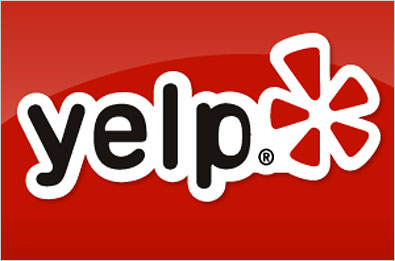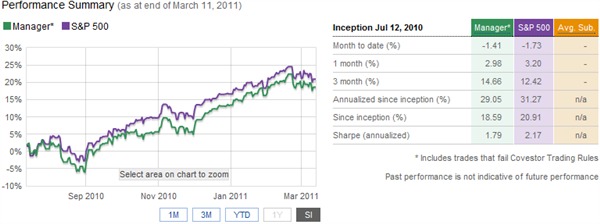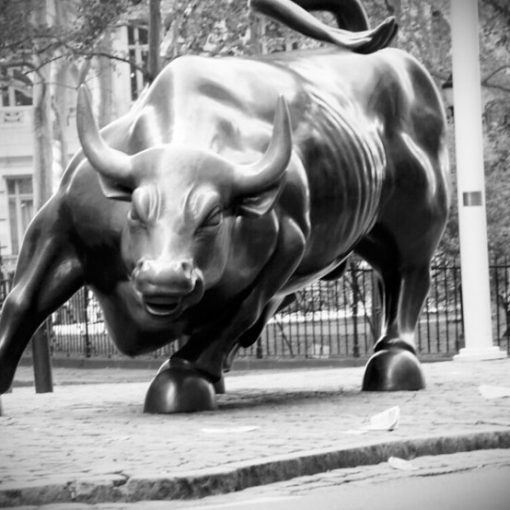In late July, ultra-high-end carmaker Ferrari filed to go public.
Fiat Chrysler Automobiles (FCA), which owns 90% of the storied Italian carmaker is offering 11% of its holdings to the public and will thereafter distribute its remaining holdings to FCA shareholders.
The deal is expected to price in early 2016.

Luxury Wheels
But just as Ferraris aren’t simply cars, Ferrari’s IPO isn’t simple either. And it starts with the first sentence in the deal summary: “Ferrari is among the world’s leading luxury brands…”
Silly me, I thought Ferrari made cars. Oops. My bad. Errore mio.
Yes, of course it makes cars – about 7,000 every year. Along with their run-of-the-mill sports and GT cars, the company makes “limited edition” vehicles. And “very limited editions.”
Primo Brand
That carefully tended exclusivity has led quite organically over 68 years to Ferrari as it stands today: primo cars and a primo brand.
Reading through the prospectus is quite impressive – to me it seems crystal clear that Ferrari understands its own brand values and how to maintain them.
For example, the prospectus confirms the long-standing rumor that Ferrari intentionally under-produces its cars so that dealers need to maintain waiting lists – even during economic downturns.
But wait a minute, hasn’t Sergio Marchionne, CEO of FCA and Chairman of Ferrari stated publicly he wants to increase sales volumes of Ferrari cars? Yes he has.
Strategic Plan
And there it is on page 39 of the prospectus: “Our strategic business plan reflects a continuation of the low volume strategy, while gradually increasing shipments to approximately 9,000 units per year by 2019.”
Wait a minute: that’s an annual growth rate of only 4.4% from the 7,255 vehicles sold in 2014.
So Ferraris aren’t going to suddenly be as common as Fords. Phew.
But investors looking for revenue and profit growth might be concerned: if the cash flow isn’t going to come from more car sales, from where will it come? Merchandising of Ferrari’s brand now accounts for less than 5% of total revenue.
Should shareholders brace for more Ferrari-branded Puma sneakers or LEGO toys? More theme parks? And if Ferrari goes all demenziale with the licensing, will that hurt the core car brand?
Rolex Mystique
Let’s look at some other companies. What about Rolex? Like Ferrari, privately-held Rolex sells limited amounts of new product while tending to an after-market of its older products.
It also participates on a corporate level as a sponsor of various sporting activities, including Formula 1 auto racing. (And less happily, Rolexes, like Ferraris, get counterfeited.)
But Rolex doesn’t have Ferrari’s brand equity, and probably can’t sell anything else, except perhaps watch bands, with the Rolex brand.
Baccarat
Baccarat (owned by private equity firm Starwood Capital) also makes new fine crystal while there exists a vibrant after-market for its earlier works.
Starwood is also attempting to cash in on the brand through the creation of a line of Baccarat-branded upscale hotels. But the jury is out on the effectiveness of that strategy.
Beemers
A more interesting comparison might be with BMW (BMW:GR). The German carmaker was once a high-end brand with distinct automotive values.
BMW invented the ‘sport sedan’ category with its 1600 model in the late 1960s, then perfected it in the ‘70s and ‘80s with their 3-Series.
But in the 1990s, BMW made the calculated decision to trade those brand values to address the mass market.
Right now, they’re halfway there, still managing to charge premium prices for German Chevys, BMW’s vaunted light-weight and nimble handling exchanged for numb steering, run-flat tires, non-German low-cost manufacturing and other concessions to the hoi polloi.
Revving Up
How’s that working out? Pretty damned good, from a business point of view.
In 2014 BMW sold 1.812 million cars (up 9% year-over-year) and earned record profits of 5.82 billion Euros (also up 9%). And BMW makes no great attempt to license its brand.
But at some point on that downward brand trajectory, BMW cars will no longer command premium prices. What then?
Hogs
Perhaps Ferrari investors can learn the most from Harley Davidson (HOG).
On one hand, it’s hard to fault a company that has survived for 110 years, through wars and bad managements and that remains quite profitable.
And Harley is perhaps closest to Ferrari in its attempt to blend the manufacture and sales of real vehicles with the widespread licensing of its brand.
But Harley faces a serious problem: an aging customer and prospect base. Harley is dying by the sword: it decided in the 1980s the Harley brand would be about its bikes’ owners, rather than about the bikes themselves.
And then it built a lifestyle empire to reinforce it. Clothing, restaurants, co-branded pick-up trucks. That led to record sales and profits. Well done.
So well done that in 2015, Harley’s brand is: “50-something caucasian American males wearing Harley-branded denim, wallet chains and do-rags.”
How many millennial males find that attractive? How many young women? Or people of color? Answer? Not as much as Harley would like.
Ferrari Challenge
When your brand isn’t about your product’s attributes but about your users’, then your brand will die with them. Ferrari probably wants to avoid that.
So back to FCA boss Marchionne, who just last year said, “Let’s not fool ourselves here. We are in business to supply cars to people.”
Umm…..no.
When nine of the top 10 most valuable cars ever sold at auction are Ferraris, then there’s something more to the brand.
When a burnt-out, rusted-out, mildew-ridden 1967 Ferrari 330 GTS sells for nearly $2m at auction (which happened in January of 2014), we’re no longer talking about cars. At least not cars as something to transport you from point A to point B.
Intangibles
We’re talking about fine art. And fine art has its own values. Like aesthetics. And scarcity. Provenance. Social signaling.
In the developing markets responsible for Ferrari’s recent growth, Ferrari ownership is probably 100% social signaling. (Not too many autobahns in northern India…)
If Mr. Marchionne wants to raise production a little, perhaps in proportion to the number of millionaires in the world, that probably won’t affect the prices of Ferraris, new or old.
But he should bear in mind the marketing truism: ‘After a time, the customer owns the brand.’ Ferrari’s road car brand isn’t about transportation. It’s about fine art.
Artistic Touch
Good luck to the investment bankers trying to place an IPO value on…an artist.
Of course, Marchionne, FCA and the bankers are trying to shove Ferrari out the door, so of course he’s going to emphasize short-term investment values (spelled, “g-r-o-w-t-h”) to do so.
Once on its own, Ferrari could dial back the brand licensing, focus on the product, ignore the arriviste shareholders and resume normal service.
What’s Italian for “Apple?”
Photo Credit: Axion23 via Flickr Creative Commons
The investments discussed are held in client accounts as of July 31, 2015. These investments may or may not be currently held in client accounts. The reader should not assume that any investments identified were or will be profitable or that any investment recommendations or investment decisions we make in the future will be profitable.




